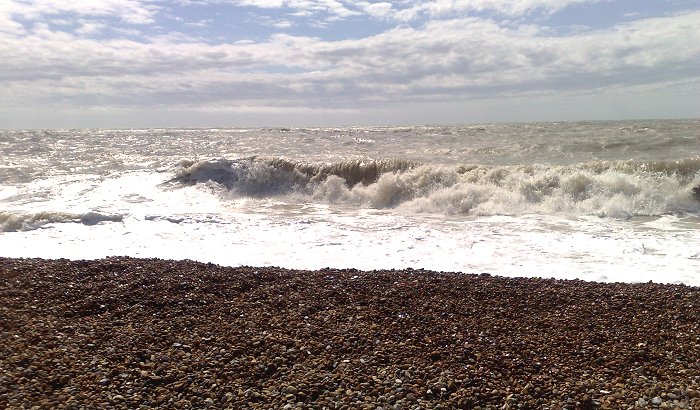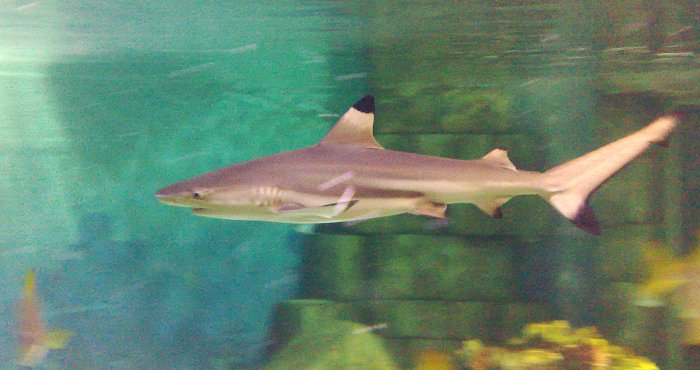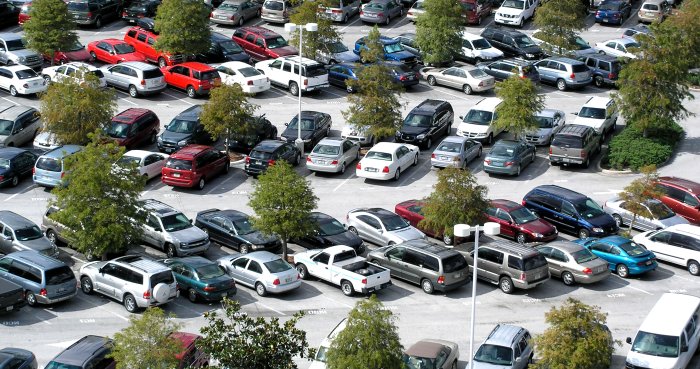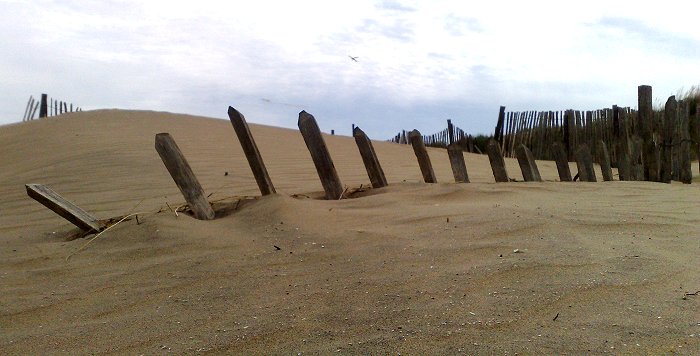
It's a fairly well known fact that, for all the writing I do about mobility, I work from home and so don't always appreciate some of the real world tips and gotchas until I embark on a business trip or holiday. But 'en vacances' I've been and I here present seven things I've learned over the last seven days - for your interest and (hopefully) education, should you also be heading out to pastures new in the remainder of the holiday season...
1. Watch out for battery drain caused by maintaining a difficult data connection
It's a documented fact that being in an area of poor 3G reception can cause battery drain while the phone ramps up power and connection attempts, trying to keep that elusive '3G' icon lit up. I don't normally worry about this much, partly because I don't travel that much and partly because I've usually got battery power to spare (N95 8GB, E90, 6650, etc) But what I learnt this week is that this issue is magnified if you're keeping a data connection alive as well.
I was browsing AAS Mobile with a more or less full battery and then headed into an indoor tourist attraction without 'disconnecting'. An hour of gazing at sea horses and sharks later, I noticed my phone was getting quite warm - always a bad sign - and that the device had been trying and trying to keep the data connection going despite the (apparently) lead lined walls of the building. Result:- battery power was down to much less than half. In an hour. I had taken half a dozen photos, it's true, but the poor data 'reception' had really taken a huge toll on my battery.
Moral of the tale? Close Web down before heading into areas of known poor network reception.
2. Just because there's a decent voice/bar signal doesn't mean the data network's any good
I experienced terrible data rates with six bars of voice signal at many points at the UK seaside... not every phone mast from every operator supports 3G data, even now in 2008. So you'll have lovely voice call quality (probably over GSM) and then find that you're stuck with GPRS data rates, often down in the 30 to 50kbps range. Which is soooo slow when you're talking about trying to tether your laptop to your phone to get online. There's no moral here, just don't be too confident of fast data because your phone's showing a full set of bars. In some areas, it will be lying.
3. You've got to use your brain when taking holiday photos of kids and creatures
When dealing with family, it's no use just leaving everything on default, at least not on decent camera phones like the Nokia N95 and N82. By the time the device finishes focussing, the moment will have been lost and your child subjects, even if you've got them to pose, will be looking a little strained and won't be shot in their best light.
Instead, predict the rough distance you'll be shooting at and focus on something at that distance, getting the green focus lock rectangle. Then swing the N95/N82/camera round and you can finalise the shot by pressing the shutter all the way down at exactly the right (spontaneous) moment, without worrying about a focussing delay.
The other problem is that pets, kids and (in my case) fish never stay still. How do you shoot moving subjects without them ending up blurred? This is a photographic technique that's as old as time, but it's worth repeating. First of all, use the pre-focus trick from above and then 'pan' the device to follow a moving subject. In other words, swing the smartphone round (e.g. left to right) at the exact same apparent speed as the subject. Although you'll not match the (angular) speed of the subject exactly, it'll be close enough most of the time, given that the shutter's only going to be open for a tiny fraction of a second. The photo should show your subject in crisp focus and with no motion blurring. The background will be nicely blurred, of course, adding to the feeling of speed.

One final tip, geared towards getting your family to accept your photographic habit - make sure you show off your best photos on your smartphone screen or the chalet TV (via TV out) at the end of each day. Getting them to see what great results have come from your incessant and annoying 'fiddling' will definitely help get them off your back for the rest of the holiday!
4 Satellite navigation is still as flawed as it always has been
Sorry to say, but even the latest Nokia Maps or TomTom Navigator or Route 66 are flawed. Plotting a route of more than a handful of miles, your human common sense and intuition will triumph when it comes to planning the 'best' route. An example: Nokia Maps decided that one particular route was the 'best' in taking us from Reading to East Sussex, a two and a half hour, 150 mile journey - and it was determined to stick to it. Around halfway through the route, the motorway looked clear enough that we decided to trade absolute distance for reduced journey time and we ignored one of Maps' instructions. For the next 30 miles, it kept on insisting that we make a u-turn and go back to the deviant junction, so that we could continue on the 'best' route. We got so fed up that we cancelled the navigation.And then re-enabled it when we got within 10 miles of our destination.
My two big tips for in-car phone-based navigation: (1) plan the route by eye from a paper map and bring this in the car with you. Don't let the navigation software loose until you get to the last 10% or so of your journey - it'll shine on the 'guiding you through twisty roads in an unfamiliar area' scenario but will just get on your nerves for the first 90%. And (2) remember to bring along a 12V car power lead for your phone - real time navigation means that the screen/backlight and GPS are both on, all the time. Which means that a full battery will drain as fast as your car's fuel tank. With the 12V plugged in, you can relax, knowing that, if anything, your phone's being charged up, rather then down, as you drive.

5 You've got a GPS in your pocket, so make it work for you
Your family may sneer at you constantly getting your smartphone out (at least, mine does), so make sure those extractions really count. My favourite trick is to mark the position of the car when parked in a new town. So, no matter how distracted and confused we get, finding our way around shops and attractions, I can always navigate directly back, not only to the right car park, but also to the actual parking space. And, along with this, don't forget to set a new 'quick alarm' to remind you of when your car park ticket expires. Having a penalty 'ticket' in a holiday town would definitely put the dampeners on your holiday!
6. T-Mobile's Web'n'walk is an absolute steal
As you may know, I've always favoured buying smartphones contract-free and then running them on pay-as-you-go SIMs... that way, I can buy and sell hardware as I like and never have to be worried about forking out serious sums of money every month. The big downside of pay-as-you-go, traditionally, has been being seriously stung (we're talking jellyfish here) for data use. At one point, Vodafone were charging me £7.30 per Megabyte, which made mobile Internet prohibitive. Thankfully, since June 2008, Vodafone have capped mobile Internet at £1 a day, which is more reasonable for out-and-about use. Their limit is 15MB per day though, which is small enough that you have to watch what you look at if you're tethering to a laptop, for example, or perhaps using video streaming or podcasts.
T-Mobile's pay-as-you-go data bundles were something of a revelation to me (thanks again, Rafe) and, as I say, an absolute steal. The 5 day data bundle is £2.50 for five days, i.e. 50p per day (that's about US$1 a day) and is capped at 40MB. Even better, it seems that the 'day' part is rounded up, so that you get until midnight on the last day of your bundle. If you buy the package early on the first day then that's effectively six days of almost unlimited data for just over 40p a day. And very nearly covers the holiday week. In comparison to the many hundreds of pounds spent on meals, attractions, drinks, etc - during that same week, an extra £2.50 to give you all the Internet you want, wherever and whenever you want, is a bargain. Highly recommended.

7. Sand and phones don't mix!
Put this down in the bleedin' obvious category, but the seaside usually means sand - or at the very least, salty spray, and both are sworn enemies of high tech electronics. After experiencing a virtual sandstorm on our first day at the beach, I resolved to leave the N95 8GB in the chalet rather than risk it again, using Rafe's Nokia 6650 as a lower-tech, less vulnerable alternative (sorry, Rafe!) Examining this (and my wife's E51) at the end of the holiday, both of which had been pocketed whenever humanly possible throughout the week, revealed sand inside the battery compartment, sand alongside the memory card, sand everywhere. It was eye opening to see how far sand could penetrate.
On something like the E51 or 6650, reclaiming the phone to pristine condition was as easy as giving it a good brushing down, inside and out. The thought of sand attacking a Nokia N95 or Samsung INNOV8 with the camera, speaker and other apertures and extra buttons, along with the far greater intrinsic worth, doesn't bear contemplation.
Rafe suggests keeping an N95 inside a zip-locked plastic bag, but I'd consider this a last resort and would recommend sticking your SIM inside something less precious for those beach/paddling visits. You have been warned.
Steve Litchfield, 22nd August 2008
